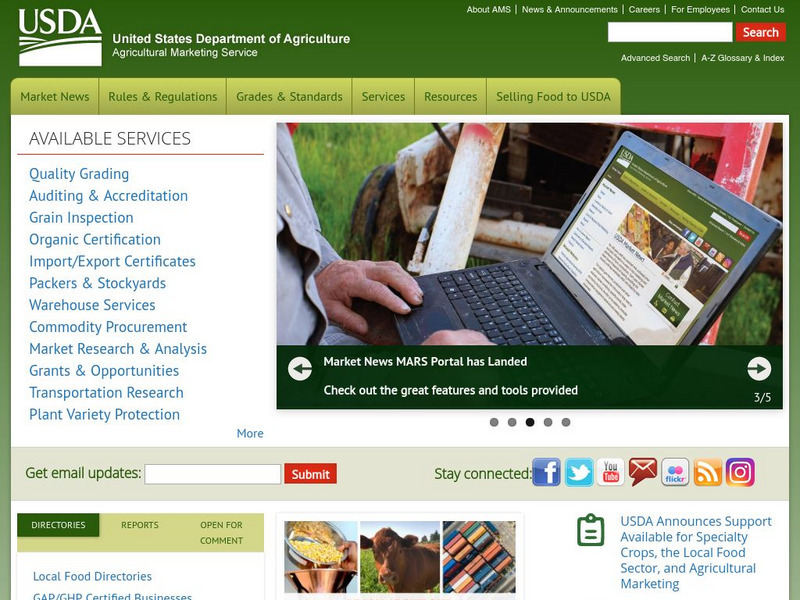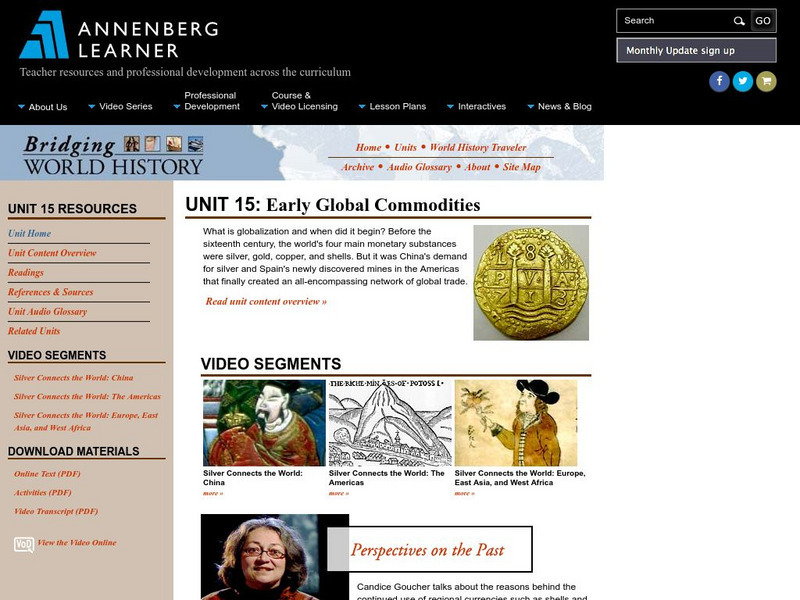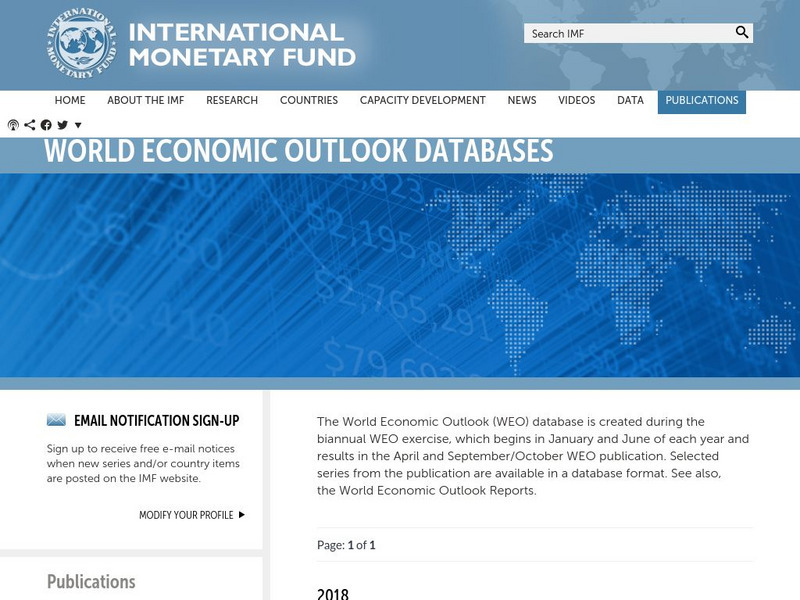Hi, what do you want to do?
Curated OER
Making Sense of the Census
Students problem solve the mean and median of agricultural data by completing a worksheet. They discuss the results of the statistical data.
Curated OER
Why Do Gasoline Prices React to Things That Have Not Happened?
High schoolers investigate how the price of gas is determined. For this economics lesson, students analyze supply and demand and seasonal demand, create tables and graphs and reflect on consumer expectations.
Curated OER
Export-Import Game
Students recognize how international trade affects them as consumers and become familiar with basic agricultural crops grown in Kentucky. They identify items used in their daily lives and .heir place of origin and examine export/import...
Curated OER
GNP Simulation Using Foods in the Americas
Students explore food supply distribution. In this GNP distribution lesson, students participate in a simulation that requires them to eat foods from the American continents. Students are served according to their chance positions in...
Curated OER
Energy Generating a Culture: Early American Coal Miners and Coal Mining Culture
Students calculate how much coal they use based on their electric power usage. In this environmental science lesson, students trace the history of coal mining in US. They write a letter to USPS to encourage them to create coal mining...
Curated OER
The Fact Finders
Students analyze agricultural data and make predictions about events in history. For this history lesson, students correlate the relationship between historic events and issues in agriculture to see if there is a correlation. They...
Curated OER
Truth and Advertising
Students view and analyze fragments of advertising images from magazines to become familiar with different techniques used to sell products, write captions for advertisements, and create their own advertisements from scratch based on...
Curated OER
Breaking News English: Argentina Beef
In this Argentina beef instructional activity, students read the article, answer true and false questions, complete synonym matching, complete phrase matching, complete a gap fill, answer short answer questions, answer discussion...
Curated OER
The Economics of Organic Agriculture
Students examine how organic agriculture affects farm profitability and how government programs affect organic agriculture. In this organic agriculture lesson students complete an activity on costs and returns.
Curated OER
That was Then, This is Now
Students compare and contrast data charts and statistics for food prices of now and in the past. In this food prices lesson plan, students answer short answer questions and calculate computations.
Curated OER
Pizza Portions
Students explore mathematics by participating in a pizza pie activity. In this nutrition activity, students identify the caloric intake in a piece of pizza and estimate the average number of slices eaten by a person. Students utilize...
Curated OER
Makiing Sense of the Census
High schoolers investigate trends in agriculture. In this secondary mathematics lesson, students evaluate agricultural census data from 1982 to 2202 as they compare the properties of the mean and the median. High schoolers...
Curated OER
Pacific Northwest History - Natural Resources, Ports and Railroads
Students explain the importance of extractive resources on the development of the Pacific Northwest. They explain how the timber industry, fishing, mining and agriculture industries shaped the growth of the Pacific Northwest.
Curated OER
ESL: Money Quiz
In this ESL money quiz worksheet, students choose the word that has the closest meaning to a description of money given. Students may click on an answer link.
Curated OER
LET'S TRADE
The pupils will become familiar with the methods used to trade agricultural products between countries.1. Allow students to research the trade embargoes the United States has imposed on other countries.
2. Use encyclopedias and almanacs...
PBS
Pbs Learning Media: Ask a Commodity Analyst: How to Analyze the Markets
A collection of commodities market analysts present their "tricks of the trade" highlighting the data reports they rely on to effectively analyze the markets. A video, essays about the market, commodities, cash marketing, etc. and a...
The Balance
The Balance: An Introduction to the Financial Markets
This article explains what the different types of financial markets are, including stocks, bonds, commodities, and derivatives, as well as what the functions of financial markets are.
Other
Usa: Chapter 5: Stocks, Commodities, and Markets
Chapter 5 provides an overview of how stocks, commodities and markets work in the U.S. economic system.
US Department of Agriculture
Usda: Agricultural Marketing Service
Home page for the Agricultural Marketing Service of the USDA, links to product and commodity marketing information and job opportunities.
Annenberg Foundation
Annenberg Learner: Bridging World History: Early Global Commodities
This unit examines globalization from its true origins rooted in China's desire for silver and in Spain's conquest of mines in America.
Other
Trading Charts: Law of Supply and Fundamental Analysis of Commodity Markets
A very thorough yet concise description of the law of demand.
Other
International Monetary Fund: World Economic Outlook Databases
These databases present economic data for individual countries, aggregated sets, and for commodity prices going back to 1999. The information is published twice a year.
Cato Institute
The Gold Standard: An Analysis of Some Recent Proposals
Summarizes specific and recent proposals set forth to return the U.S. to the gold standard. Includes detailed information on the gold "price rule," "classical" gold standard, and other important terms.
Countries and Their Cultures
Countries and Their Cultures: Dyula
"Dyula" is a Manding word typically referring to "traders" as a socio-professional category, particularly to Muslim long-distance traders who speak one or another dialect of Manding. The name is used as an ethnic label by...


























